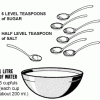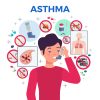If you or someone else has been shocked, your immediate response can have a big impact on minimizing the effects of an electric shock. An electric shock happens when an electric current passes through the body. This can burn both internal and external tissue and cause organ damage.
A range of things can cause an electric shock, including:
· Power lines
· Electric machinery
· Lightning
· Electric weapons, such as Tasers
· Household appliances
· Electrical outlets
What to do after witnessing an electric shock
· Don’t touch the injured person if he or she is still in contact with the electrical current.
· Call your local emergency number if the source of the burn is a high-voltage wire or lightning. Don’t get near high-voltage wires until the power is turned off. Overhead power lines usually aren’t insulated. Stay at least 20 feet (about 6 meters) away — farther if wires are jumping and sparking.
· Don’t move a person with an electrical injury unless he or she is in immediate danger.
When to seek emergency care
Contact us at THE AMBULANCE COMPANY 09155556040/ 09155556030 if the injured person experiences:
· Severe burns
· Confusion
· Difficulty breathing
· Heart rhythm problems (arrhythmias)
· Cardiac arrest
· Muscle pain and contractions
· Seizures
· Loss of consciousness
Take these actions immediately after while waiting for medical help:
· First Turn off the source of electricity, if possible. If not, move the source away from you and the person, using a dry, nonconducting object made of cardboard, plastic or wood.
· Then begin CPR if the person shows no signs of circulation, such as breathing, coughing or movement.
· Try to prevent the injured person from becoming chilled.
· Apply a bandage to cover any burned areas, if available, or a clean cloth. Don’t use a blanket or towel, because loose fibres can stick to the burns.
Share this article if you find this information helpful.You can follow us on Twitter, Instagram, Facebook for more helpful medical tips.






